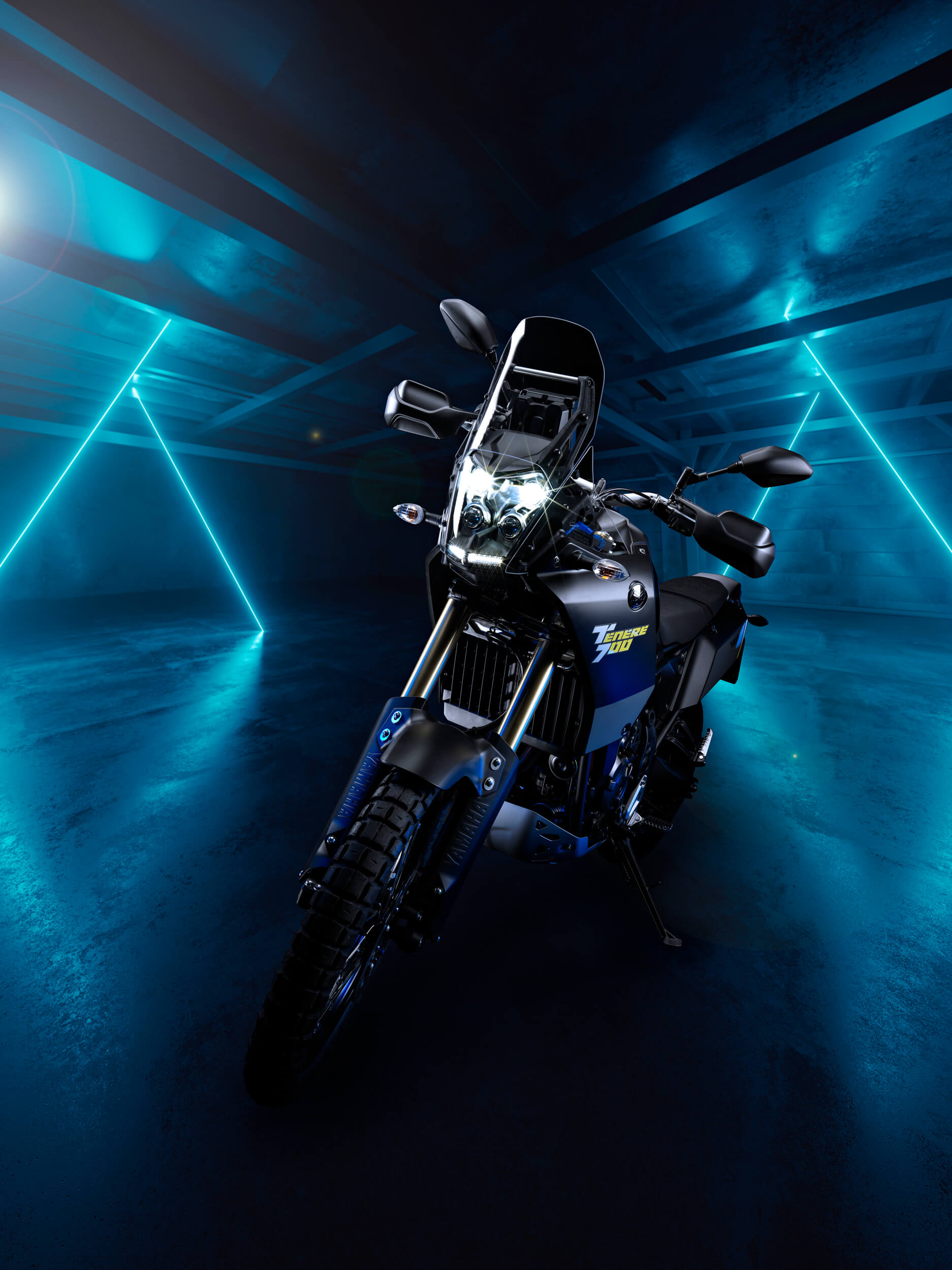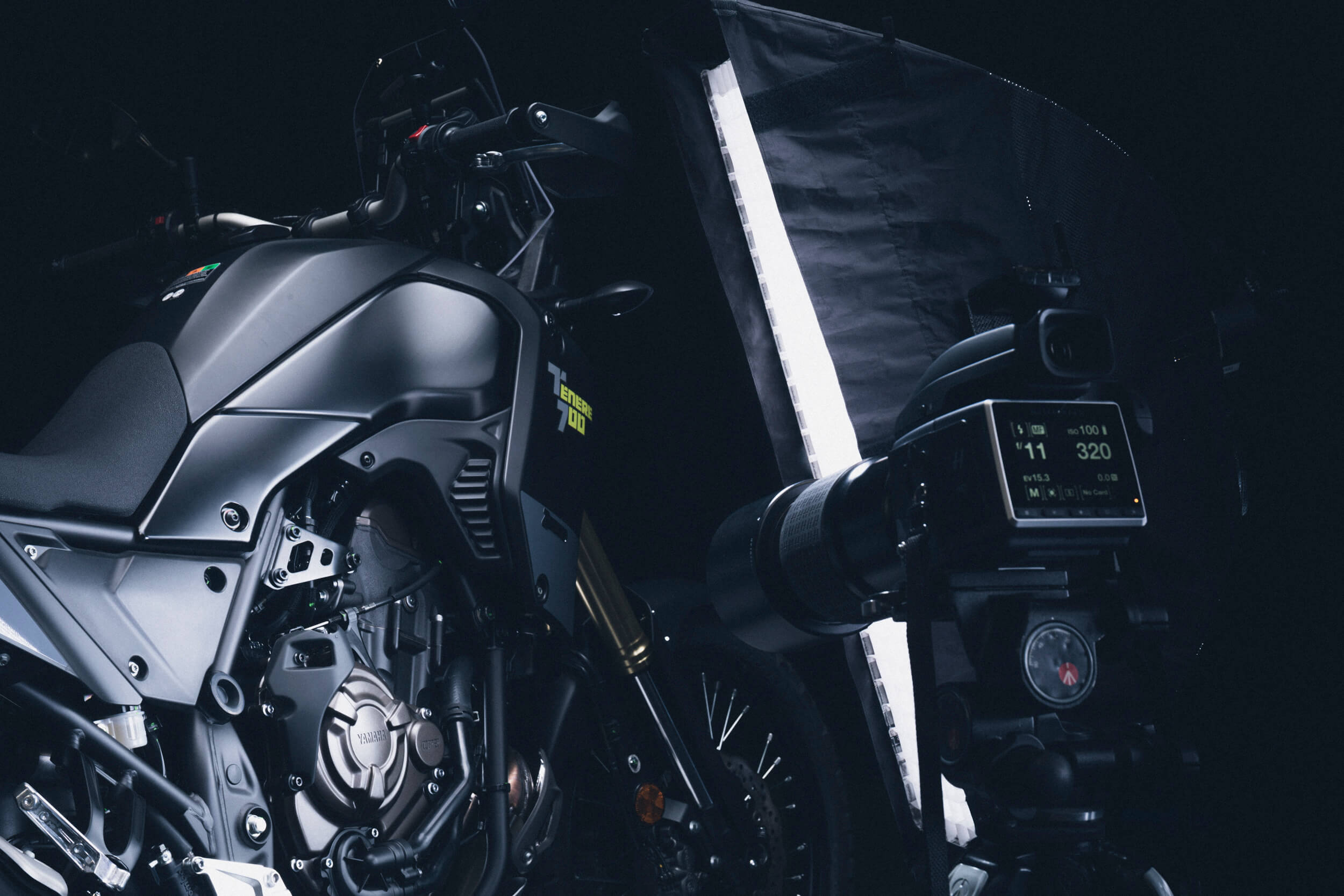Case history
This project features YamahaT700 and how composited pictures, still life studio shots, and seamless white images for the motorbike are all crafted in one photographic session.
The project displays different pictures and how they are designed for different output channels (like editorials, social, web magazine), however working together in presenting a product from different perspectives.

Digital compositing
Digitally composited pictures are typically used as hero shots. They present the object in a strong, eye-catching way. Retouch techniques and some accurate photography work are combined to take the object on a different location without physically exiting the studio.
Here the goal is to catch the viewer’s attention at first glance, to engage the eye of the beholder with some cool image to start with, without worrying too much about very focused descriptions. This perspective is meant to be more inspiring, instinctive, and creative. It must be a bit loose.. leaving something for the mind to complete the big picture.
In many situations digital compositing offers multiple options of background change and visual tweaking, sometimes proving to be more flexible than traditional on location photoshoot.

Studio Shots
Close up shots emerging from the darkness are developed using light-occlusion techniques. This is where photography shows its full potential in creating atmosphere and visual focus. Contrast control is the king here by crafting calibrated light-to-shadow transitions resulting pleasing to the eye. Suggesting a quiet, almost silent surrounding to the object, here the goal is to investigate design to its depth, infusing a sense of clarity and precision.
These pictures are generally useful in supporting technical descriptions without compromising on eye-engagement.


showing respect in framing
From a composition perspective, close up shots are crafted with extreme attention to angles as we must depict the product carefully. This approach is meant to feel more respectful in terms of lines and proportions to designer’s original idea or project. The goal is to deliver a strong image look that nicely lines up with the product identity, while reproducing the product design untouched in terms of geometries.


why lighting is crucial
Lighting is essential to all above as it represents the core of photography work. Each light source is carefully calibrated in direction, intensity, occlusion, color and most importantly in its function. Lighting work is articulated in different diagrams from pretty simple single-light set ups to more complex multiple-light sources (typically 6-8). Refined lighting is crucial to photography as it strongly determines ‘how’ viewers perceive any subject.






Full Figure Shots on White background
Finally, seamless white background is particularly appropriate in creating full figure images of the product with the most unbiased and essential perspective. Here we must totally change lighting techniques although keeping the same goal of showing the product at its best and for how it truly is.
To a professional usage-proof photography, shaping light for this kind of images is not less important than previously mentioned. Light shaping is still the key to represent a product without compromising on any way it looks.



credits:
Studio facility: digitalmovie.it
Project designer: Andrea Mescalchin
Photography: Matteo Mescalchin
BTS photography: Giovanni Santon
PhotoEditor: Paola Balasso
